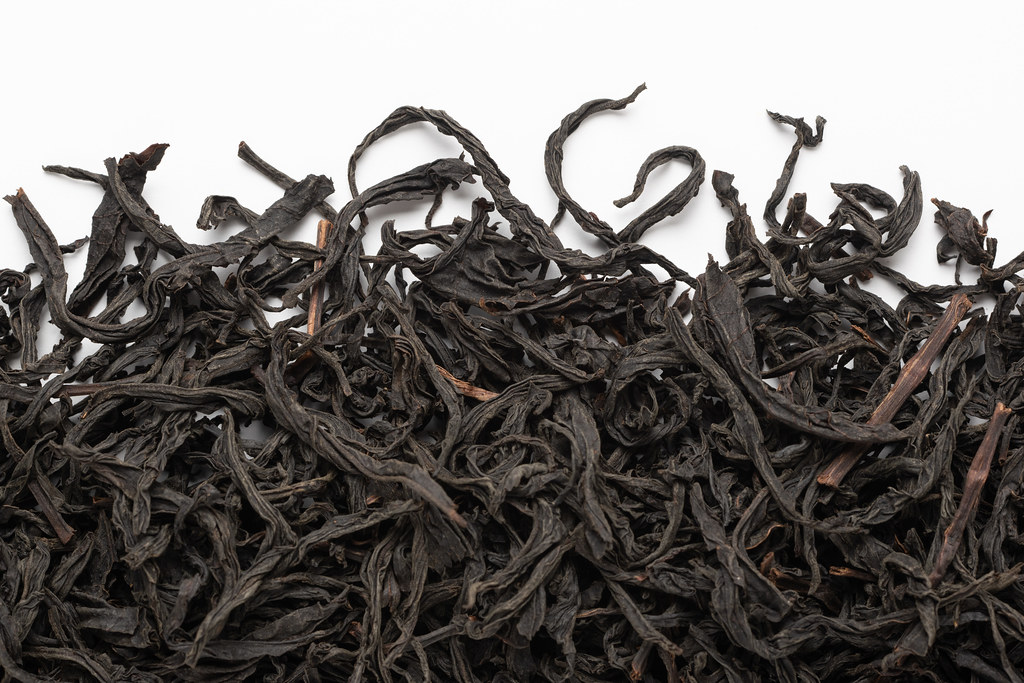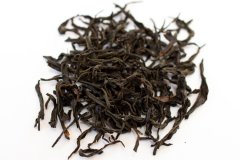Taiwan Hongyutai Tea No. 18 Black Tea brewing parameters sharing Riyue Lake Black Tea Flavor and Taste Notes
Caption: mint, spices, red fruit and strong tea. Description: Kungfu Tea brewing mode: 5G per 100ml | 95 °C (205 °F) | 30, 45, 60, then add + 15 seconds tasting (Note: these are the instructions on the label, because the website has slightly different suggestions) comment: the results of this three-part series, because mountain brook tea's ruby 18 origin tasting setting. It includes Myanmar Assam (mother / flower), Taiwan tea tree (father / pollen) and ruby black tea (hybrid). The teas come from a farm in the Sun-Moon region, where Ruby 18 was first developed, and all three teas are grown side by side. The Mountain Creek Teahouse experienced tasting tea together, and then decided to provide the same tea to others! These comparison sets are very useful, so I know I have to share it with you! The dried leaves of Hongyutai Tea No. 18 are dark black and silky. Although similar to Burmese Ashami and Taiwan Camellia, it is visually more like Taiwan Camellia, thinner and smaller. The leaves give off aromas of baking, charcoal, wood and medicine, with aromas of cherries and grapes. Preheated cover bowl: when the dried leaves are added to a heated container, the leaves have a sweet fruity, roasted, nutty, earthy and cherry flavor.

Soak (30 seconds): the wine quickly turns red and amber, with aromas of baking, charcoal and fruit. This wine has the smell of charcoal, damp soil and minerals, and the back of the throat is dry. Drip (40 seconds): the color and smell of the wine is similar to that of drip 1. On the palate, cherries, damp soil, licorice and baked goods are more complex. There is an astringent taste in the teeth and the back of the throat is getting dry. Soak (60 seconds): after a minute, the wine turns darker copper brown and has less red background. The smell is still roasted and charcoal. Tannins stand out in the wine, with aromas of fruit and damp soil. Impregnation 4 (1 minute 15 seconds): although the taste of baking is still there, it is more mellow, with charcoal and mineral flavours. The damp leaves are red chocolate, with a sweet, earthy metallic smell. The leaves look more like Taiwan camellias with milk chocolate. During the tea tasting, I paired the tea with the Black Forest Chocolate Cake. The taste of cherry and chocolate highlights the taste of ruby 18. The cream of the cake also reduces some of the dryness of the tea. I have to say that the original set is a good learning experience, and it's really interesting to taste "mother" and "father" tea and then taste the mixed tea. If you have the chance, I highly recommend that you try this set or similar one! I did learn a lot. In general, it is not surprising that Ruby 18 is similar to Burmese Asan and Taiwan camellias. Ruby 18 is thinner and harder, like camellias, and they all have a stronger astringent taste. Asamjah in Myanmar has a sweet fruity aroma in the first few infuses. To me, Ruby 18 is more like camellia. Although I generally don't like more astringent tea, it was really a good learning experience (rating 3gam5). Origin: the questions posted in Taiwan, Yuchi, Nantou and Riyue Lake are: what kind of tea do you want to try-Burmese Assam tea (mother tea / scented tea), camellia (father tea / pollen tea), or ruby (hybrid tea)?
Important Notice :
前街咖啡 FrontStreet Coffee has moved to new addredd:
FrontStreet Coffee Address: 315,Donghua East Road,GuangZhou
Tel:020 38364473
- Prev

What is the difference between Jin Junmei black tea and Golden Monkey black tea? Which is more expensive, Jin Junmei or Golden Monkey?
The classification of Chinese tea is determined by the different processing of tea. In fact, any freshly picked bulk tea, after the corresponding tea processing, can produce any type of tea. However, specific tea varieties may be more suitable for producing specific types of tea. The tea production process generally includes harvesting China.
- Next

Black tea secret: what is the taste of black tea made from Taiwan wild camellia, Taiwan jade father tree No. 18
Caption: red fruit, light spices, semi-smooth, fresh mushrooms if push hot water! Description: Kungfu Tea style brewing mode: 5g per 100ml | 95C (205F) | 30Magne45Pol 60, then add + 15 seconds to taste (Note: these are the instructions on the label, because the website
Related
- Why does hot American coffee taste bitter? Difference in proportional concentration between hot American and ice American
- Is espresso stored overnight in the refrigerator harmful to your body? Is frozen coffee better than freshly ground coffee?
- What parameters and proportions of water temperature should be used to grind and brew fresh coffee beans? Why can't I drink freshly roasted coffee right away?
- Customers have "changed" Manner's new products! Shop assistant: Please don't mess around!
- Remove sockets in customer areas at Starbucks stores?! Netizen: I won't go if I really tear it down
- What is the difference between the taste steps of sun-dried coffee and washed coffee? Why is sun-cured coffee sweeter and washed coffee sour?
- The recipe for salty grapefruit dirty is revealed! Coffee Festival salty grapefruit dirty coffee making materials parameters ratio milk share!
- How about the flavor of Sunlight 74158 at Sidamo Banshaha Mathieu Processing Factory in Ethiopia? 74158 Share the proportion of coffee brewing parameters!
- What effect does Italian American coffee with filter paper have? Will coffee taste better if it is put on filter paper at the bottom of the powder bowl?
- What is the color difference in coffee beans? What are the characteristics of honey processed coffee beans? Why are the anaerobically treated coffee beans uneven in color?

